House of Funk
Experience Design / Spring 2022
Project Overview
In this project, we worked with House of Funk, a brewery and roastery located in North Vancouver, BC. The project brief was to follow a design process to understand how to identify and solve a real business problem.
My Contributions
In this project, my contributions consisted of business and product research, copywriting, photography, and photo retouching, and graphic design (creating illustrations in mock-ups, poster designs).
Team
- Sina Omidallah
- Ciara Kosai
- Julia Nguyen
Timeline
1 semester (4 months)
The Problem
Through interviews, workshops, and ethnographic studies, our team identified a disconnect between the online perception and the in-house experience of the brewery. By bridging this gap, we proposed that we would exceed the expectations of first-time guests, and give them a reason to come back.
Personas
Through individual interviews with the brewery's founder and four consumers, we gathered insights on consumer demographics, workplace culture, business frustrations, and opportunities for growth. From there, we identified three core personas that attend the brewery: the newcomer, the socialite, and the regular. Using product research, we coincided these identities with the core beers at House of Funk.
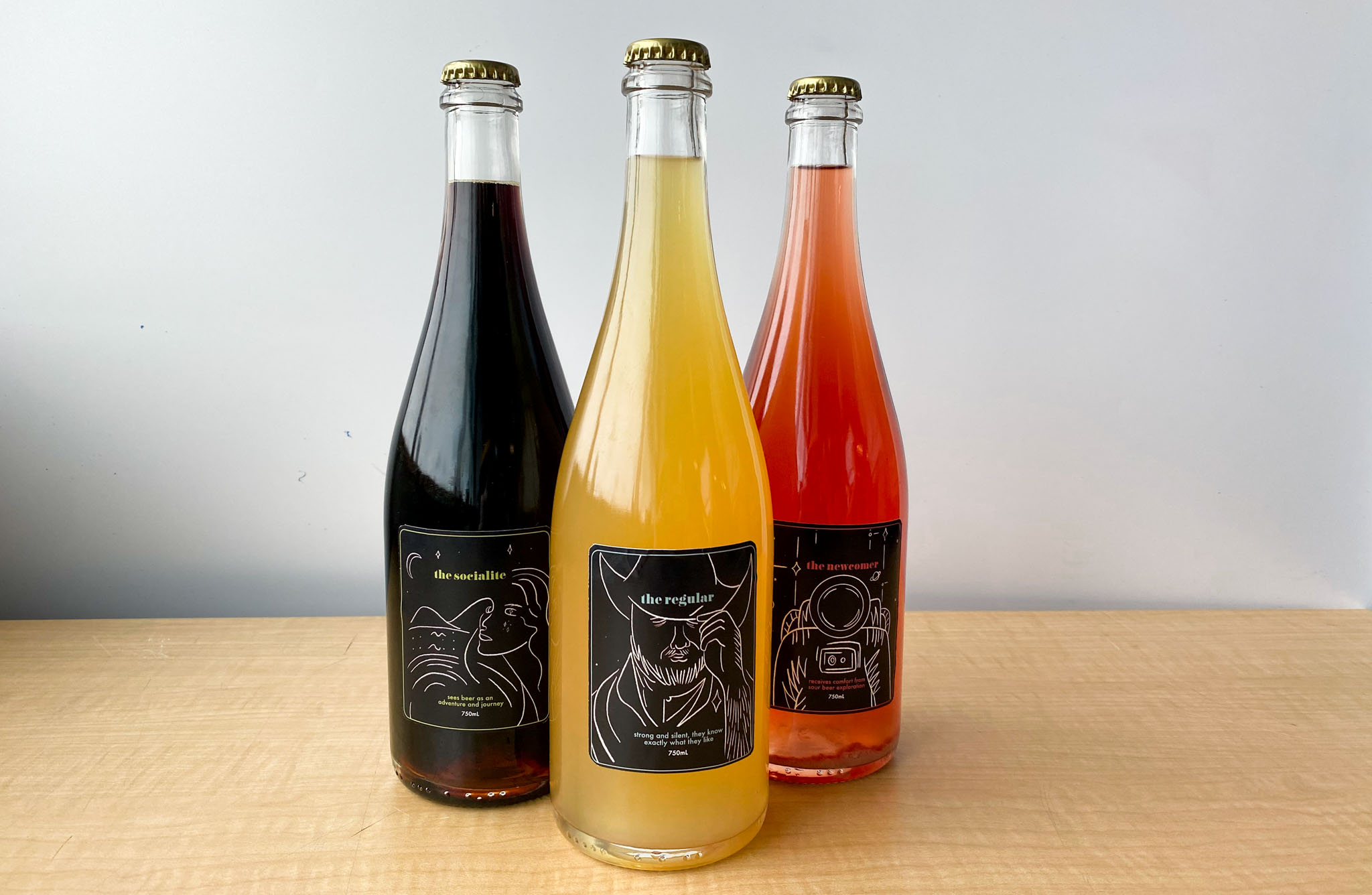
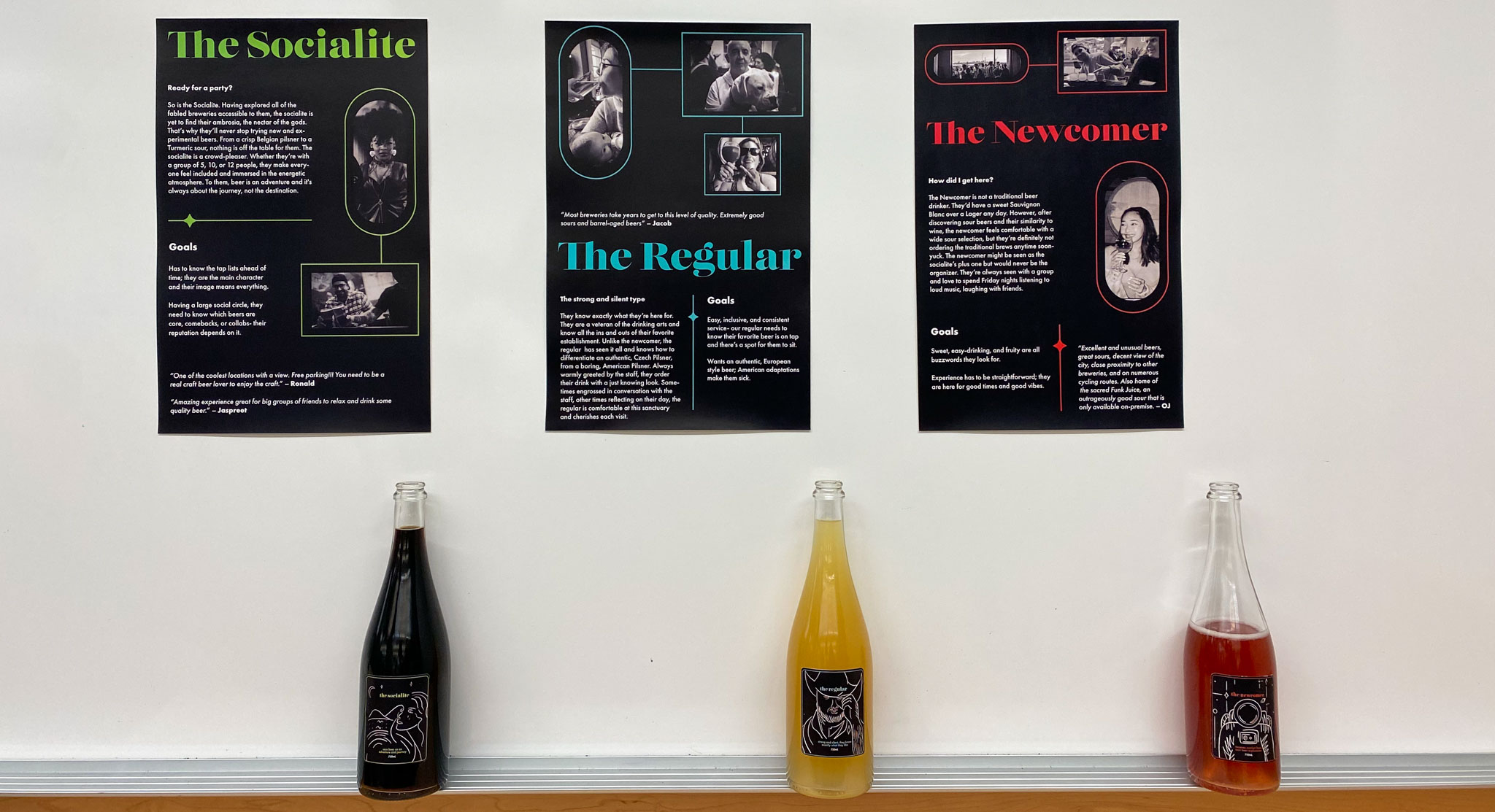
These personas played a significant role in our design process. By researching both the history of various beers and the people behind the business, we were able to thoughtfully correlate each personality type with a House of Funk beer. For example, the newcomer is experimental in their choices and goes for something interesting like a fruit-infused sour. The most compelling aspect of these personas is they are a type of person that is not tied to age, career, gender, etc. The newcomer could be a 19 year college student or a recently retired business woman.
User Journey
Once we understood who our consumers were, we mapped both the socialite's and newcomer's journey. We chose not to study the regular's journey as they already have a personal connection to the brand (which is not within our problem area). In the socialite's journey, we identified their experience is consistent but could be more exciting. In the newcomer's journey, we identified that although they liked the atmosphere, they felt disconnected from the brewery which prohibited them from forming a meaningful connection with the brand.
Our takeaway for the socialite persona was their experience was consistent, which prevents them from exploring the other offerings of the brewery. Likewise, our takeaway for the newcomer persona was a disconnect between the pre-visit and in-house experience, which made it difficult for these customers to form a deep connection to House of Funk.
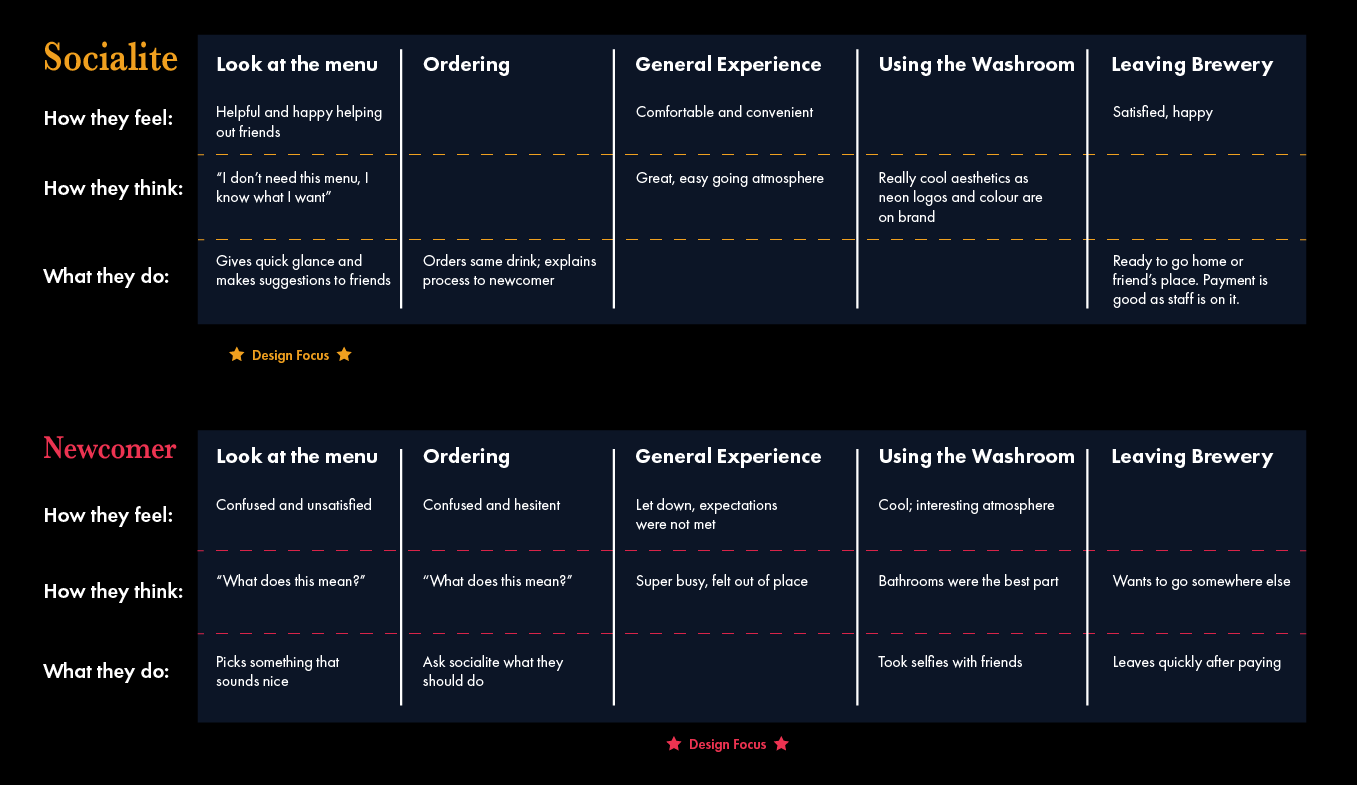
In this journey, we note that the most critical touchpoint for socialite's is as soon as they see the menu, while the newcomer relies on the overall experience.
Participant Group Workshop
Next, we designed a workshop to better understand our participant group and test our original hypothesis. This workshop had four participants: the brewery owner, the brand manager, a "socialite" consumer, and a "newcomer" consumer. The workshop was executed in two sessions to separate consumers and stakeholders and consisted of four activities: a photo collage, a mind map, mash-up questions, and solution ideation.
From the stakeholders, we observed their sense of love for the process of brewing and the aspect of sharing this love with the people who visit. From our consumers, we observed that they focused on the unique experience and environment that House of Funk provided. Both consumers and stakeholders were aligned in feeling that the best way to build a deeper connection between HOF and its consumers was to:
- leverage the existing touch points between staff and consumers, and
- present the HOF products in a comprehensible and unique way.
The Interactive Beer Lens
Our Solution
Using augmented reality, we created the Interactive Beer Lens. This solution is an in-house experience in the brewery using QR codes.
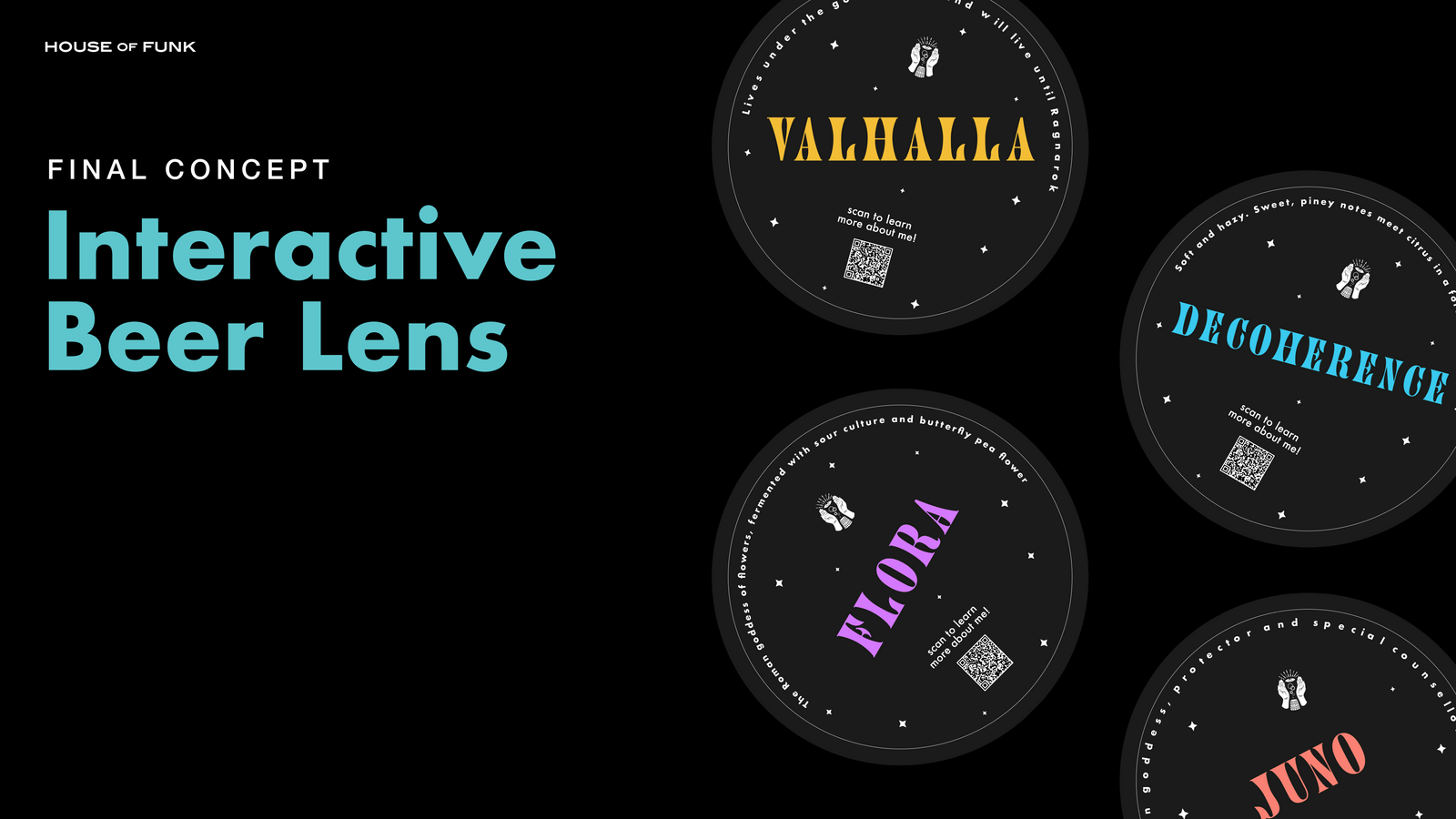
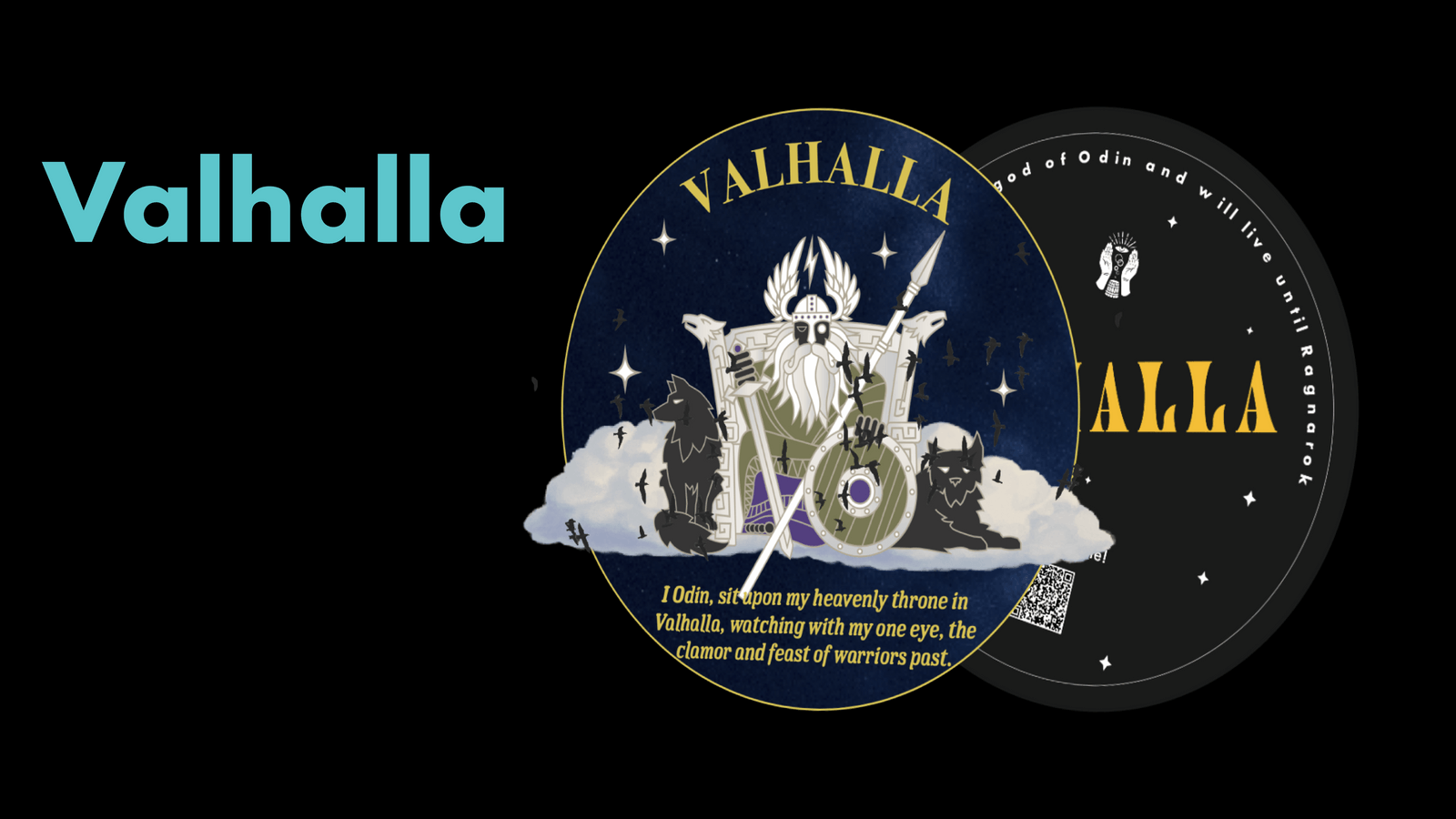
How our Solution Works
The way our solution works is:
- Guests are given a coaster after ordering
- They scan the QR code on the coaster
- They learn more about the product through augmented reality
In addition, we propose that the brewery could place QR codes in other areas of the brewery as "hidden easter eggs". By doing this, the brewery could spark a conversation with consumers and give them a reason to come back and explore further.
Intended Benefits of our Solution
Our solution is designed with the following benefits in mind:
- QR codes are dynamic/adaptable
- Experience is embedded in-house
- Solution has a low cost to implement
- Not a barrier to in-person interaction
- Experience is not offered by other breweries
Future Implications
The Interactive Beer Lens is an entry point to a larger picture. We see it as the first step to "a funkverse" that enhances the in-house experience. This immersive experience should not act as a barrier to social interaction but rather enhance the existing, face-to-face connection. Through QR codes, we can create various portals that connect the online and physical experience.
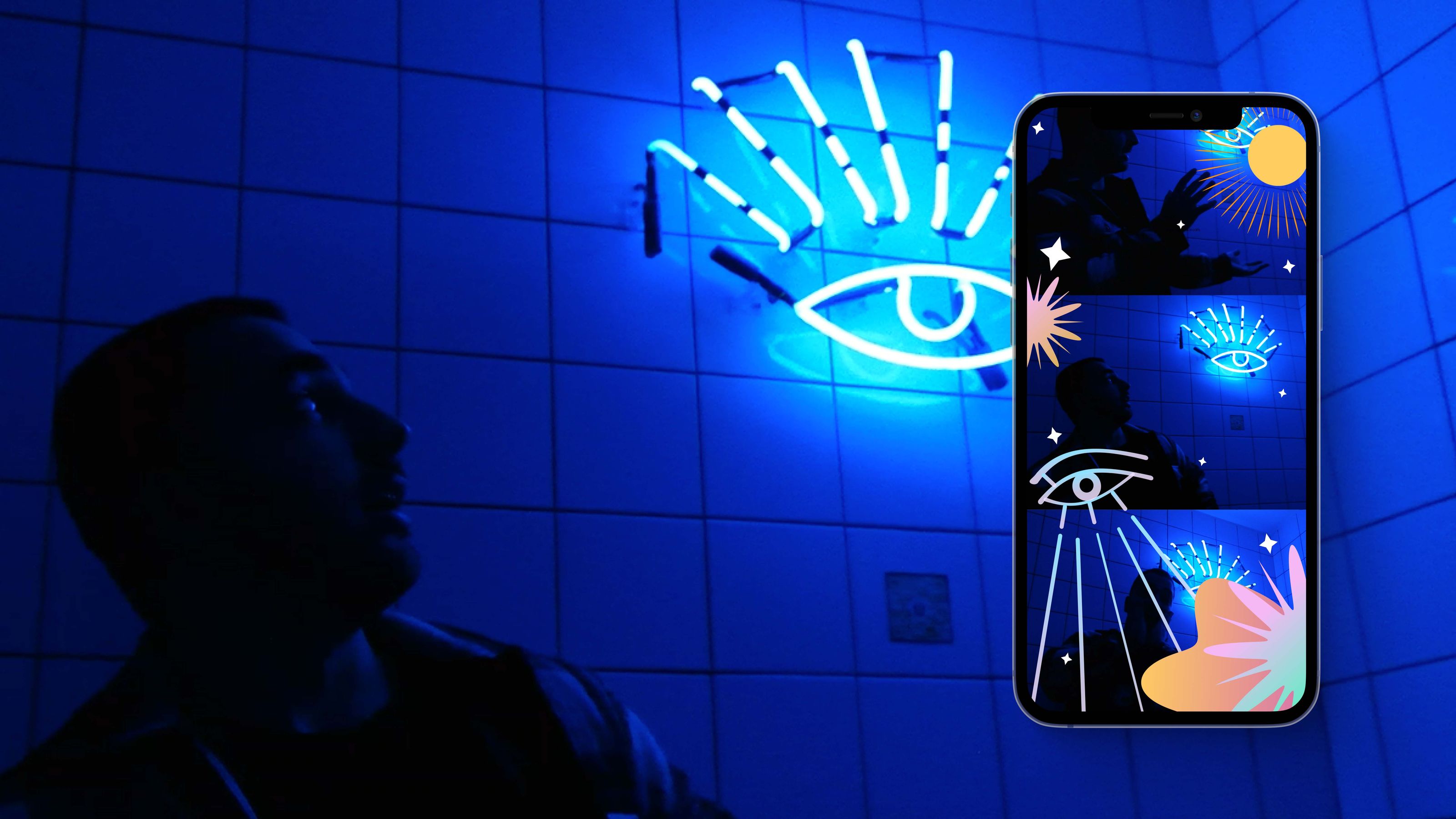
Final Notes
This project was particularly interesting due to our direct involvement with the brewery.
Our solution was rooted in process and adapted over time. If I had more time
with this project, I would love to test our solution in the brewery and see how customers
perceive our intervention.
In this project, I learned to:
- Trust the process
As designers, it's very easy to want to jump to the end solution. However, I think that because we followed a specific cyclical process of researching, iterating, discussing, and prototyping, we were able to come up with a solution none of us could have anticipated. - Practice empathy
House of Funk is more than just a brewery to its stakeholders, employees, and guests. The atmosphere, people, events, and culture are what differentiate House of Funk from its competitors. By focusing on this, our solution aligns with both the needs of the business and its' consumers.